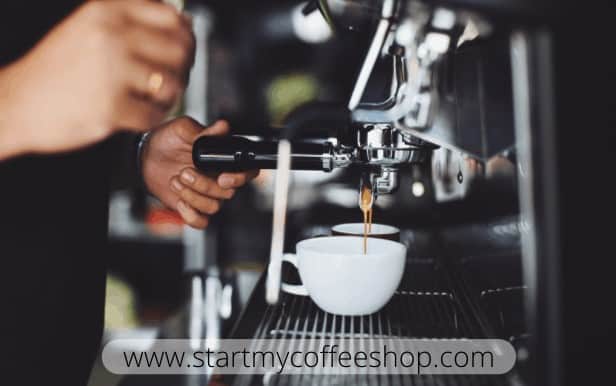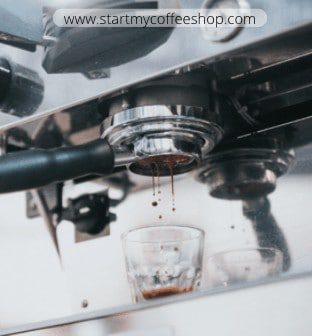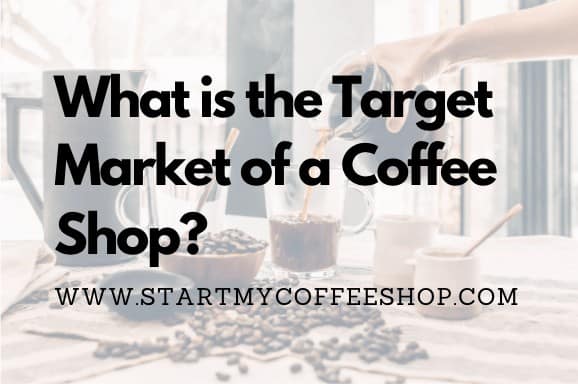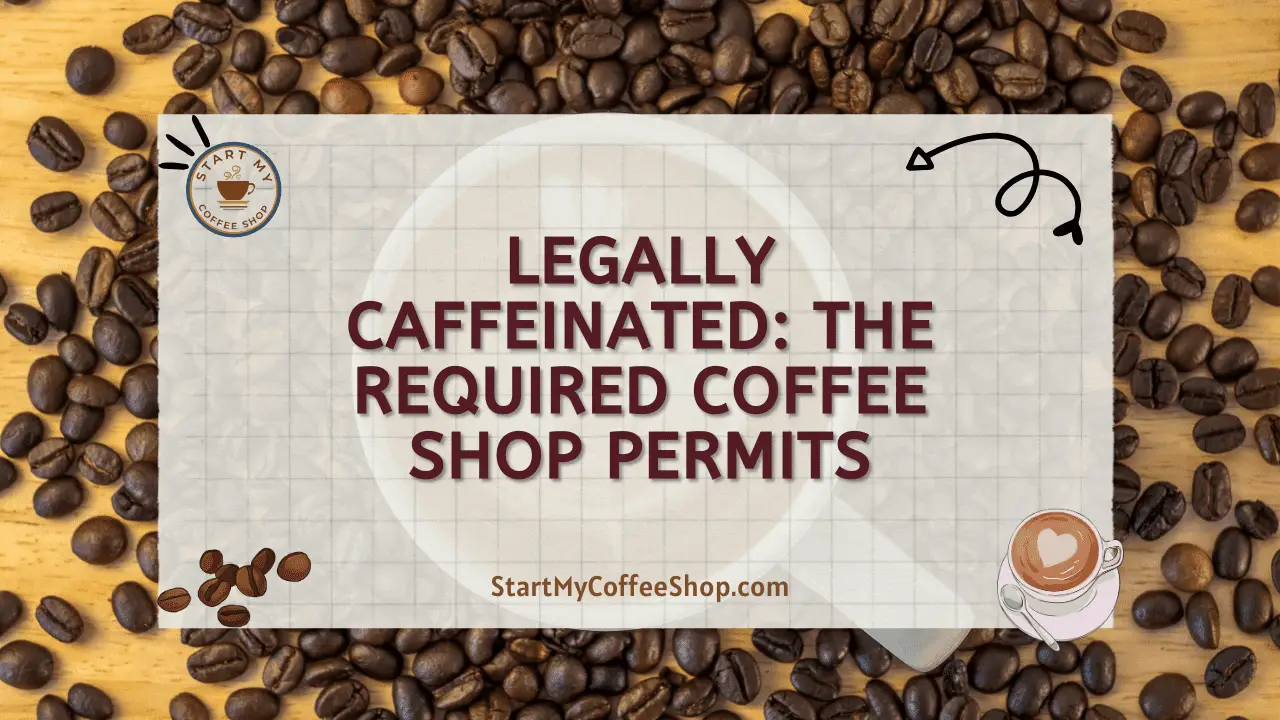Legend says a trip of goats and a herder named Kaldi discovered the wondrous coffee tree in the primal forests on the plateau of Ethiopia. Centuries later, coffee is the most popular hot beverage and the second most popular drink around the world. So, who are all these modern-day coffee aficionados?
What is the target market for a coffee shop? Coffee drinkers are as varied as the very beverage they consume. From financial experts to construction crews, every sector of society enjoys a good cup of coffee. Fast-paced, high energy career fields, like retail and health care, tend to have a high percentage of coffee consumers as well.
A wide assortment of flavors and a boost in energy are the top reasons coffee buyers reach for their favorite cup or two of coffee. And ever since the introduction of espresso-style drinks, the popularity of coffee rises ever higher.
A Cup of Coffee History
When the goat herder, Kaldi, reported his discovery of the energizing fruit to the local abbot, the monk used the berries to make tea. He found that, indeed, the berries have the ability to keep one awake and alert for long hours of prayer. Cultivation of coffee, via the fruit’s stone-type seed, the coffee bean, soon began to spread across the globe.
From its home in Ethiopia, the expanse of coffee stretched north to the Arabian peninsula, where it arrived in the Yemen district during the 15th century. Once there, it flourished in popularity as qahveh khaneh, coffee houses, began to spring up. Coffee swept across the lands of Persia, Egypt, Syria, and Turkey, reaching the capital city of the Ottoman Empire in the 16th century.
At some point during its travels, the use of the dried berries to make tea was outshined by the use of the hard seeds to brew the coffee we now know today. Coffee production occurs in nearly 80 countries around the globe.
Top Ten Coffee Producing Countries
| i. Brazil ii. Vietnam iii. Columbia iv. Indonesia v. Ethiopia |
vi. Honduras vii. India viii. Uganda ix. Mexico x. Guatemala |
|---|
Before we dive into learning more about the difference between Arabica and Robusta beans, let’s get to know who the people are that enjoy this wondrous centuries-old beverage.
The Who of the Coffee Market
People who love coffee and enjoy visiting coffee shops come from all walks of life. Coffee is popular among every age group. In fact, it seems as we get older, chances are greater that we will be a coffee drinker.
U.S. Coffee Drinkers by Age Group
| 18-24 years old | 45-50% |
| 25-39 | 60-65% |
| 40-49 | 60-65% |
| 60+ | 70-75% |
Price per cup will factor into who visits your coffee shop. Does your coffee shop appeal to students on a small budget and office workers buying around for the big meeting? Or do you plan to draw-in the upscale crowds with more expendable income for luxury lattes?
Learning about your industry’s target audience is the first step to reach out to the big spenders of coffee consumption. Knowing which industries spend the most money on their daily coffee habit can be a key factor in choosing where to set-up a coffee shop. If you’re already in an established location, this knowledge can help guide your marketing campaigns.
Checkout our advice for attracting these customers HERE!
Professions Who Spend the Most on Coffee
-
-
- Finance and Insurance
- Wholesale and Retail
- Medical and Healthcare
- Arts and Entertainment
- Education
- Technology
- Information Services
- Hotel Food Services
- Manufacturing
- Government
- Construction
- Transportation
-
Men and women tend to drink nearly the same amount of coffee per day. On average, women consume 1.5 cups while men drink around 1.7 cups. The typical cup consists of 9 ounces of coffee which equals out to be 13.5 oz per day for women and 15.3 oz of coffee for men.
When it comes to who spends more on their coffee, the difference between men and women is substantial. In a year, men typically spend a little over $1900 on coffee. Women, on the other hand, add a little more pizazz to their cups and spend more than $2300 on coffee per year.
Regardless of the type of people, your coffee shop will bring in, 50% of consumers prefer a location that has a drive-thru. For many, their morning cup of coffee is part of a structured routine. A quick and efficient shop that makes the perfect cup every time is guaranteed to stir up a strong following.
The What of the Coffee Market
Coffee lovers who frequent coffee shops are diverse people who share a common passion, a flavorful cup of happiness. Coffee is as varied as its consumer and those differences begin with the type of bean used. While there are roughly 120 species of the coffee tree, there are only two most commonly grown for consumption, Arabica and Robusta
Dominant Two Species of Coffee Production
| Arabica | Robusta |
| Smoother, sweeter taste
Hints of chocolate, fruits, and berries |
Stronger flavor with a harsher bitter taste
Higher caffeine, used in espresso drinks |
Drip, Press, and Espresso
Part of getting to know the typical market of a coffee shop requires knowing the different styles of coffee preparation. The most commonly used style of coffee brew is the drip where boiling water is poured over freshly ground beans. These are your classic coffee pot type coffees or the more modern Keurig-style machines.
French press coffee steeps the grounds in the coffee pot of hot water. In this device, the filter is attached to the plunger which is used to press the grounds down to the bottom of the pot. Made of metal, these filters are designed to allow the natural bean oils to pass through and into the steeped coffee. These oils contribute to the beneficial health properties of coffee consumption.
Espresso beans differ slightly from the beans used for drip and French press. They are roasted longer than regular beans to give them a stronger toasted flavor. It also takes out more of the acidity and releases more oils. The other difference is espresso beans are ground into fine sand because of how quickly the water passes through.
Espresso-style coffee drinks are the second most popular style of coffee. The different variations like cappuccino and Americano all use shots of espresso as a base. What is added to the shot is what defines each of the eight styles of espresso.
Ranking Order of Espresso Drinks by Sales
-
-
-
- Cappuccino
- Latte
- Cold-brew
- Espresso
- Mocha
- Macchiato
- Americano
- Flat White
-
-
The Why of the Coffee Market
As mentioned earlier, the top two reasons people drink coffee is for the energy it provides and the wondrous rainbow of flavors. Coffee has become tightly woven into the fabric of society for many reasons. Why people still enjoy a cup of coffee centuries after its discovery boils down to three reasons.
Reason #1
Health Benefits
Coffee beans contain significant amounts of antioxidants, vitamin B2, magnesium, and potassium. Studies continue to support the health benefits provided by antioxidants ranging from the reduction of heart disease risks to improved mood. And while a single cup may not provide much potassium, the standard serving most consumers get is a substantially healthy dose of the essential mineral. Potassium is an electrolyte that improves nerve function and muscle contraction while helping regulate the heartbeat.
Since it’s beginning, coffee has been praised for the energizing boost it gives the mind and body. The caffeine found in coffee amplifies the body’s metabolism which promotes the burning of body fat. Also, caffeine increases productivity through improved brain function, specifically memory, mood, and reaction time.
Reason #2
Comfort and Relaxation
A large percentage of coffee drinkers kick-start their day with their favorite cup as part of a routine. It sets the mood of the day with its aromas that stir positive memories. A hot cup of coffee warms the body on cold days and iced coffee cools us in the summer sun.
Coffee’s transformation over the centuries has created a swath of flavor choices. These flavorful concoctions provide a level of comfort brought on by familiarity. The peppermint candies we loved as a kid are now the burst of flavor we add to spice up the day.
As part of a daily routine, coffee can be a tool for helping wake-up and get energized. By getting the body and mind off on the right track, the productivity levels of the day improve. And with more work getting done, people’s moods improve making more positive energy overall.
Reason #3
Social Interaction
Even in its beginning phase, coffee quickly grew to be a host of social engagements. Now, centuries later, it isn’t uncommon to hear someone talk about grabbing a cup of coffee while catching up with an old friend. Coffee shops have been a common location for conducting job interviews or collaborating on projects with co-workers.
Coffee shops are created in a manner that facilitates a human synergy of warmth and welcoming vibes. Customers are treated in a way that gives them a sense of belonging to a group of like-minded coffee connoisseurs. There is a sense of the comforts of home that emanates from the decor, the ambiance, and the people who work in and visit the shop.
Frequently Asked Questions
Differences among the species of the coffee plant play one role in the flavor outcome. The dominant factor that can have both positive and adverse effects on the coffee bean flavor is the growing conditions. Geographical location and weather conditions can alter the coffee bean’s flavor strength and potency.
There are two methods for harvesting coffee, strip picked and selectively picked. The first method is the least expensive and removes all berries from the tree at once, regardless of ripeness. The second method uses systematic picking of only the ripest berries which is more costly and time-consuming.
Unripe berries are used in the capacity of mass-producing inexpensive blends of coffee. This is why most cheap coffee has the unmistakable bitter bean flavor and lingering harsh aftertaste. The use of only the finest coffee berries is reserved for the better tasting, high-end coffees as well as the gourmet brands.
To learn more on how to start your own coffee shop checkout my startup documents here
Please note: This blog post is for educational purposes only and does not constitute legal advice. Please consult a legal expert to address your specific needs.

Hi! I’m Shawn Chun
My adventure in coffee began when I first launched my first coffee shop back in the early 2000s. I had to figure out so many things on my own and to make it worse within 2 years of opening two large corporate coffee chains moved in just blocks away from me!
As I saw smaller and even some larger coffee shops in the neighborhood slowly lose customers to these giant coffee chains and slowly close up shop, I knew that I had to start getting creative…or go out of business.
I (like you may be) knew the coffee industry well. I could make the best latte art around and the foam on my caps was the fluffiest you have ever seen. I even had the best state-of-the-art 2 group digital Nuova Simonelli machine money could buy. But I knew that these things alone would not be enough to lure customers away from the name brand established coffee shops.
Eventually, through lots of trial and error as well as perseverance and creativity I did find a way to not only survive but also thrive in the coffee/espresso industry even while those corporate coffee chains stayed put. During those years I learned to adapt and always faced new challenges. It was not always easy, however, in the end, I was the sole survivor independent coffee shop within a 10-mile radius of my location. Just two corporate coffee chains and I were left after that year. All told the corporate coffee chains took down over 15 small independent coffee shops and kiosks and I was the last one standing and thriving.
Along the years I meet others with the same passion for coffee and I quickly learned that it is not only “how good a barista is” that makes a coffee shop successful, but the business side of coffee as well.
Hence why I started this website you are on now. To provide the tools and resources for up and coming coffee shop owners to gain that vital insight and knowledge on how to start a coffee shop successfully.
Stick around, browse through my helpful blog and resources and enjoy your stay! With lots of LATTE LOVE!
Shawn






